10 Tips for Men To Build a Ripped Lower Body
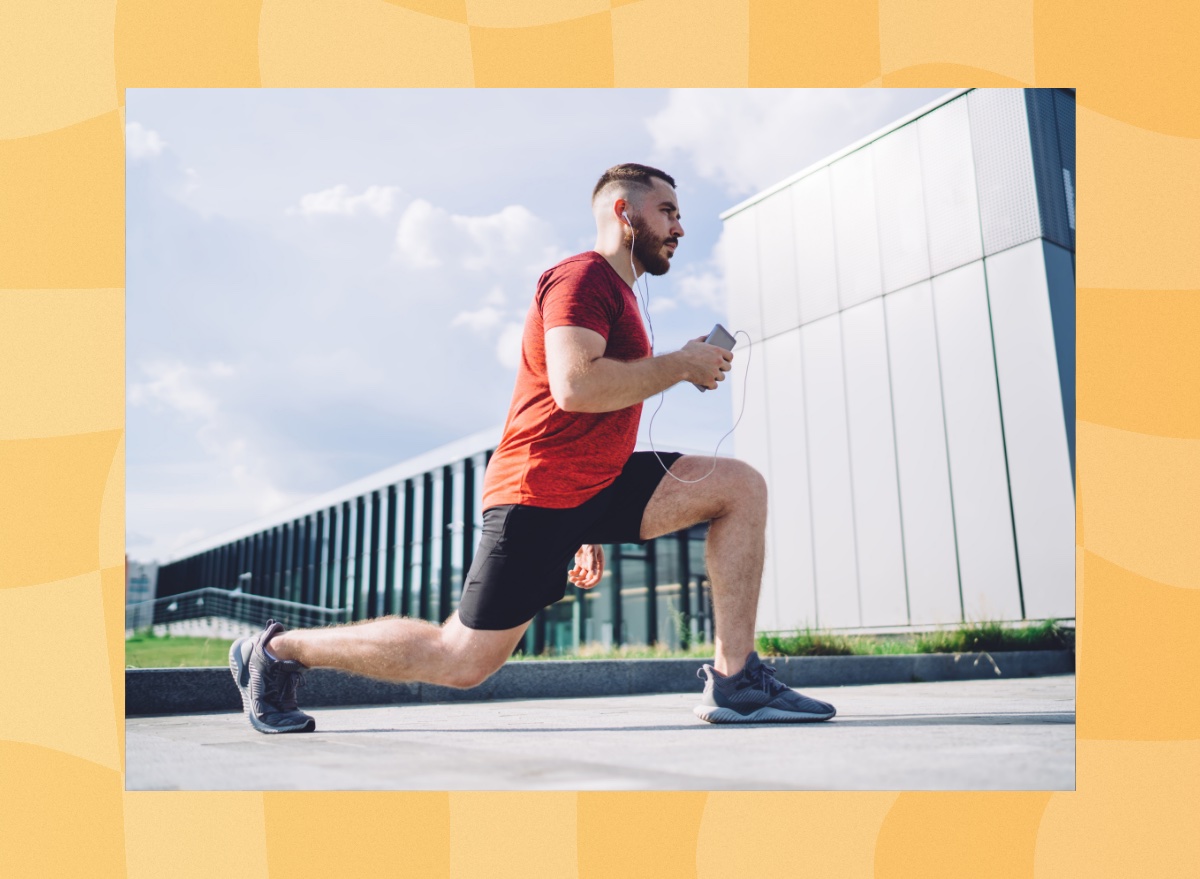
It's no secret that most men at the gym are chasing bigger arms, thicker chests, broader shoulders, and more muscular upper bodies. But where many men often drop the ball in their quest for a shredded physique is failing to work their lower body by not doing enough leg exercises or neglecting them altogether. Fortunately, we're here to help. In this article, we chatted with certified trainers and fitness experts who share their best tips for men to build a muscular lower body.
Did you know your lower body is home to the largest muscle groups? These groups include your glutes (buttocks), hamstrings, and quads. Neglecting these muscles can lead to an imbalanced physique and hinder your strength gains and gym performance. However, with the right exercises and expert strategies, you can build a strong, ripped lower body that complements your upper-body gains.
Whether you're an experienced weightlifter or brand new to the gym, the following expert insights will help you achieve a well-rounded physique and maximize your lower-body strength and muscle mass. Keep reading to discover 10 tips for men to build a muscular lower body. Then, when you're finished, check out Should You Do Cardio Before or After Lifting Weights?
Use proper form when squatting.
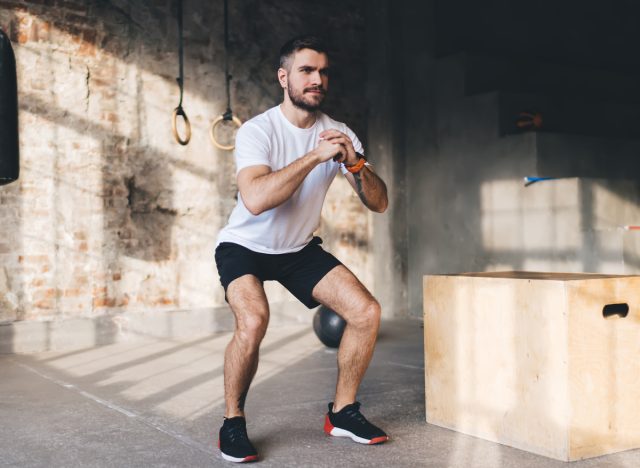
Performing squats with proper form through a full range of motion helps ensure you engage your muscles fully for optimal muscle growth and strength gains.
TJ Mentus, CPT, a certified personal trainer at Garage Gym Reviews, tells us, "Squats are one of the best exercises for developing muscle in the lower body because they involve most leg muscles. There are many different variations of squats, which can all be effective. But regardless of the variation, the most important thing to remember is to work through your body's full range of motion to fully engage as much muscle as possible."
Do more deadlifts.
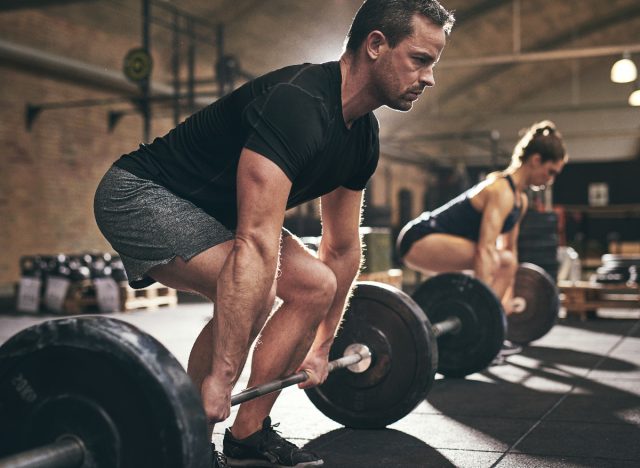
Deadlifts are a compound exercise that targets multiple muscle groups in your lower body and backside, including your hamstrings, glutes, and lower back.
"Deadlifts are one of the most effective exercises for building lower-body strength, particularly in the hamstrings, glutes, and lower back," says Kyrie Furr, CPT, a certified personal trainer and performance coach with Barbend. "Include conventional, sumo, and Romanian deadlifts in your fitness routine to increase your lower-body strength."
Perform walking lunges regularly.
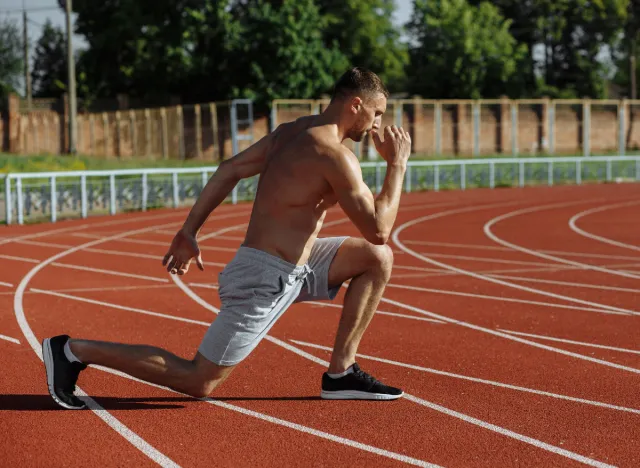
Walking lunges are an excellent way to target your quads, glutes, and hamstrings while improving your balance and coordination.
"Lunges are a great single-leg compound movement for the lower body that can help prevent or correct muscle and strength imbalances in your lower body," Mentus explains. "An effective lunge workout I've found for building muscle and definition in the legs is performing a quarter mile of walking lunges at least once a week. If you're unable to lunge that far, find a challenging distance to complete and gradually add on to it. If you can complete the quarter mile comfortably, consider adding a weighted vest for more resistance."
Practice progressive overload.
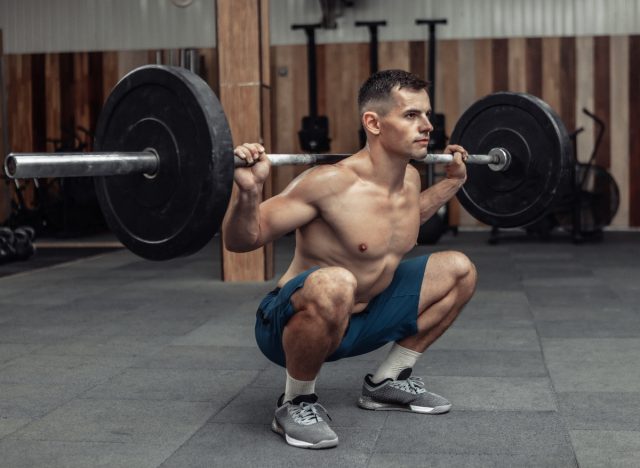
Like any other fitness goal, sculpting a ripped lower body requires a gradual increase in the weight or resistance in your workouts to keep challenging your muscles, prevent plateaus, and add strength and size to your legs.
"Progressive overload involves systematically increasing the intensity, volume, or difficulty of your workouts over time to continually challenge your muscles and force them to adapt and grow stronger," explains Furr. "This can be achieved by increasing the weight lifted, the number of sets and reps, or reducing rest periods between sets."
Incorporate hill or incline sprints.
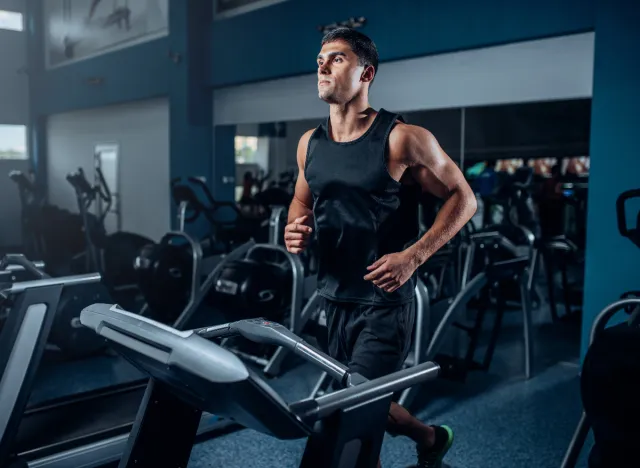
Sprinting uphill or on a treadmill incline can help strengthen and tone several muscles in your lower body, including the calves, quads, and glutes, while boosting your cardiovascular fitness.
Mentus says, "Adding a hill to run up or putting a treadmill at an incline adds resistance and challenges the lower body even more to get stronger. Try performing 10 sets of a 10-second sprint with one to two minutes of rest in between. Each sprint should be max effort for optimal results."
Add single-leg exercises to your workout routine.
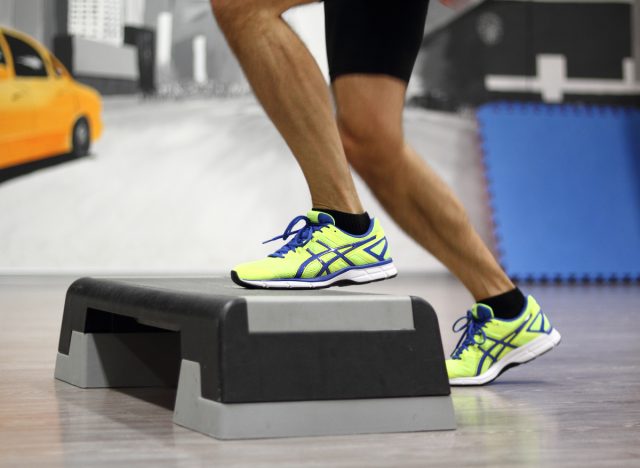
If you want to develop that shredded lower-body look, incorporating single-leg exercises into your workout routine is a must.
Furr says, "Single-leg exercises like lunges, step-ups, pistol squats, and single-leg Romanian deadlifts can improve balance, stability, and unilateral strength. These exercises can help improve balance, coordination, and any muscle imbalances you might have."
Superset compound movements with isolation exercises.
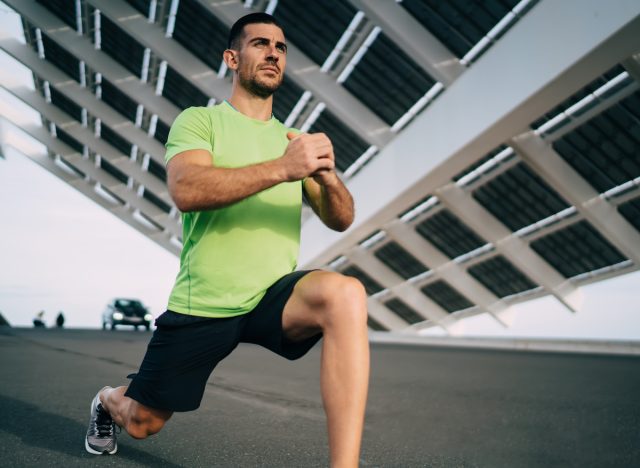
A superset is a training technique where you perform two back-to-back exercises with no rest.
"Compound movements work multiple muscle groups such as a squat, deadlift, or lunge," says Mentus. "An isolation exercise focuses on the contraction of a single muscle group, such as leg curls for the hamstrings or leg extensions for the quads. It's common for people to have a muscle group that's more stubborn to grow than others, and it could be because they're not fully engaged. By performing a compound movement like a squat and immediately filling it with a leg curl if you struggle with your hamstrings, it can help break through plateaus by giving that muscle more focus and attention."
Include plyometric exercises in your fitness routine.
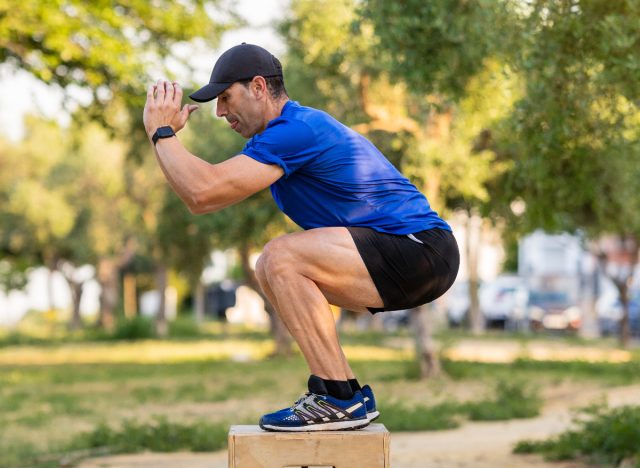
According to a 2022 meta-review, plyometric exercises can help improve your lower-body power and explosiveness, leading to better muscle definition and strength.
"Plyometric exercises involve explosive movement that aims to increase power, speed, and agility," says Furr. "These exercises include box jumps, jump squats, and split jumps to improve explosive power and agility in your lower body."
Incorporate sled pushes or drags.
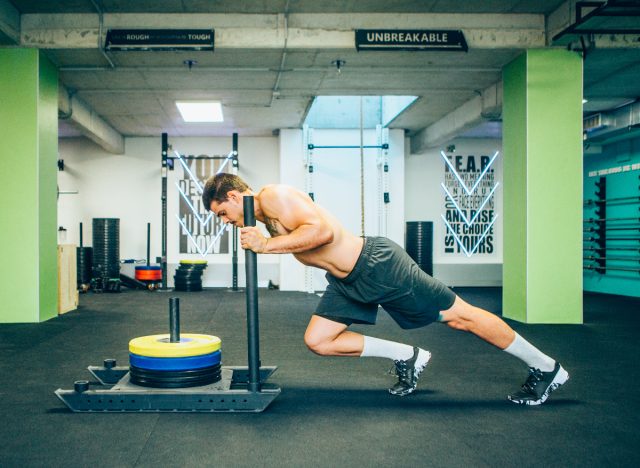
One of the best things about sled pushes or drags is that they're easier on your joints, and you're protected from going too heavy and risking injury like with a squat or deadlift.
"Sled pushing helps to focus on hip extension. You may also feel the quads and calves working as well. When walking backward and dragging a sled, it will focus on knee extension and working the quads," says Mentus.
Do interval training.
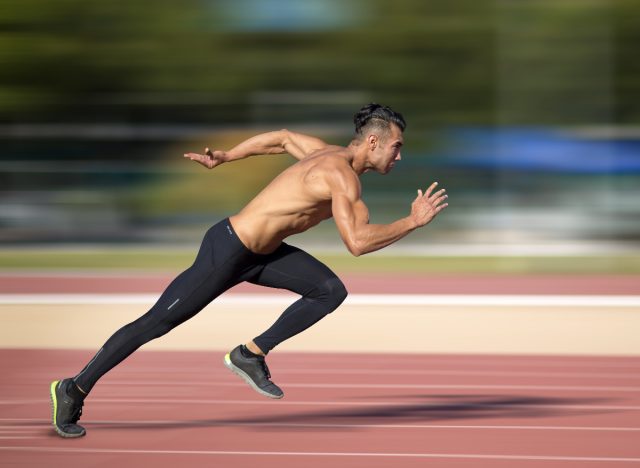
Upping the intensity of your leg workouts with interval training can help reveal ripped muscles in your lower body. Additionally, research suggests that alternating between high-intensity bursts of exercise and lower-intensity recovery periods can improve endurance, metabolism, insulin sensitivity, cognitive function, resting metabolic rate, and body composition.
"Interval training can offer benefits like increasing muscle strength and power," Furr explains. "These sessions can include lower-body exercises such as sprints, jump squats, and burpees to improve cardiovascular fitness while building lower-body strength and endurance."
- Source: ASSESSING AND TREATING GLUTEUS MAXIMUS WEAKNESS – A CLINICAL COMMENTARY
- Source: Electromyographic activity in deadlift exercise and its variants. A systematic review
- Source: Effects of Plyometric Training on Lower Body Muscle Architecture, Tendon Structure, Stiffness and Physical Performance: A Systematic Review and Meta-analysis
- Source: Evidence-Based Effects of High-Intensity Interval Training on Exercise Capacity and Health: A Review with Historical Perspective









